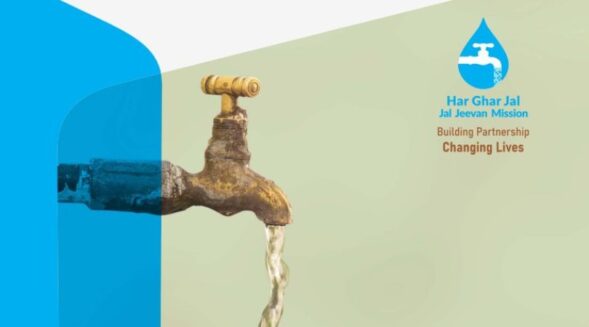
Recently on a work trip to Mairang, in the newly bifurcated district of Eastern West Khasi Hills, I was in one of the many tea stalls that dotingly line the highways of Meghalaya. It was early February, cold and raining, and contrary to its usual disposition, the weather seemed to agree with the Met department’s forecast.
Fortunately, the tea shack we stopped by had prepared a chawla. In quaint and cosy fashion, local customers with their tartan shawls and plates of rice had gathered around a hearth. I was invited by the incandescent warmth of the chawla. At first, I hesitated, fearing intrusion into their community circle. However, as I walked by, my pale face betrayed me, and I was extended a sympathetic invitation. I placed an order for a cup of milk tea and a bowl of shanna ïong and took my seat. After exchanging a few pleasantries and inquisitions, the conversation around the hearth now meandered into small talk about the weather – the biting cold of this winter, the erratic gushes of wind and rain and the recent icy storms.
Between tea and kwai, what perhaps struck me most about the conversation was a statement by one gentleman. In a very confident manner, he said he read a Whatsapp forward about “global warming”, but remarked that if the world was really getting warmer, then why is it that when winter is supposed to be receding, it’s instead becoming colder? He thought the scientists are wrong, and that weather is, instead, cooling. His younger days were warmer. I could have answered his query by relating it to a phenomenon larger than global warming: climate change. I did see the need to spoil his philosophical tenor. Like most conversations with the elderly, the best conclusion always seems to be about the changing world and a romanticisation of the past. We left the conversation, and I proceeded out of the stall and went about my business.
Whilst driving through the meandering roads which ridge through the hills, looking at the tarps covering the rocks to prevent landslides and the felling of trees along Baniun and 7th Mile as part of the highway project by the National Highway Infrastructure Development Corporation Limited, I began to think again about the conversation earlier that day.
For many of us, like the gentleman in the tea stall, change is comprehensible only in a linear trajectory; that it is supposed to be good and results in positive tactile feedback, and not the cold or drudgery. Though theoretically correct, it must be understood that the praxis of change and development is far more complicated and nuanced.
Global warming in its essence is the increase in the magnitude or scale of a process known as the ‘greenhouse effect’. It is caused by the long-term heating of the Earth’s climate system as observed since the pre-industrial period (between 1850 and 1900) owing to human activities, but primarily through the combustion of fossil fuels which raises the heat-trapping greenhouse gases in the atmosphere. Though the term is sometimes used interchangeably with climate change, the latter refers to both human and naturally induced changes to the Earth’s climatic system; those human-induced changes include the burning of fossil fuels, whilst the natural processes “change” climate include internal variability, such as cyclical oceanic patterns like El Nino and La Nina, and externally induced processes, such as volcanic activity, changes in the sun’s energy output and variations in the Earth’s orbit.
Though similar to global warming in terms of them being change-inducing phenomena, climate change is a wider term. It is a long-term change in the average weather patterns that have come to define the Earth’s local, regional and global climates. This long-term change to the Earth’s weather patterns is also significantly caused by the warming of the Earth through carbon emissions and the role played by the greenhouse effect.
These changes to the weather pattern include the inducement of erratic weather patterns such as increased or significant reduction in precipitation, frequent changes and extreme polarity in temperatures and abnormal wind patterns, as we are seeing this winter. Climate change, then, is the sum total of the changes caused by human and natural elements and is exacerbated by global warming.
Though historically we have understood that these changes and patterns in the weather can be attributed to a phenomenon, we have limited our understanding of the same by conveniently describing it all as “global warming”; it is a misnomer to interchangeably use global warming and climate change as synonyms, as we risk trivialising both.
This trivialisation is not limited to the definitional dubiety and confusion; it is far more systemic, pervasive and internalised. Oftentimes, we are led to believe that addressing the issue of global warming and climate change is simple – school children participate in poster design competitions with slogans such as Save Water, Save Life, the use of public transportation to reduce exhaust emissions, thrift shopping, tote bags, thermos flask and the swapping of plastic straws. These measures may help and raise awareness, but they remain tokenistic, inaccessible and oftentimes co-opted for greenwashing by the very institutions which have caused and continue to aggravate this problem: for instance, the fast fashion industries have long co-opted the issue of climate change by jumping on the bandwagon of sustainability and environmental consciousness because it sells. They have mislead customers into believing they are consuming “cruelty-free products” and concomitantly making them feel better about themselves.
In Meghalaya, there is often an expression of anguish about the poor performance of the state in terms of sustainable development, as reflected in its low rankings in the Sustainable Development Goal (SDG) indices. Though this can be partly attributed to the over-dependence on extractive industries such as coal and limestone for the economic sustenance of the state, there is very little exploration for alternatives apart from promoting boutique entrepreneurship. In contravention to the essence of sustainable development, the central government launched the National Mission on Edible Oil and Oil Palm which seeks to establish palm oil plantations in Meghalaya; the coeval push for palm oil – a monoculture crop well known for its detrimental effects on the environment – exists despite NITI Aayog’s August 2021 report North Eastern Region: District SDG Index and Dashboard Baseline Report 2021–2022 which ranked Meghalaya second from the bottom from the Northeast and the lowest five nationally in sustainable development. It is also problematic when environmentally detrimental crops not endemic to a region are planted on a monoculture scale, leading to vast ecological imbalance and extinction. Though many amongst tribal farmers may be incentivised to pursue palm oil monoculture for its profitability, the project is certain to intrude into the traditional land tenure system and pose a threat to food security because of its effect on the soil and the shrinking of cultivatable land for food crops.
As stated earlier, what is perhaps imperative is the need for a more nuanced understanding of the issue of climate change, sustainable development and its systemic relations – how climate change, the environment and its sum total affect people, its other constituents and vice versa. Seeking to address the same, the youth environment movements of today have coined the term ‘intersectional environmental justice’ to refer to an intersectional analysis of climate change – one that illuminates how different individuals and groups relate differently to climate change owing to their situatedness in power structures and based on context-specific and dynamic social categorisations. In other words, intersectional environmentalism is more than just planting of trees and installing of solar panels; it also seeks to question the power structures profiting off environmental exploitation and repatriating those exploited by these structures. For intersectional environmentalists, the working class and those bearing the brunt of climate change and exploitation, such as indigenous communities, are at the forefront of their discourses.
However, it is unfortunate that discourses on intersectionality remain exclusive to intellectual and academic structures than amongst the milieu they seek to represent, like informal settings such as in our conversations around the hearth in the tea stall at Mairang.






